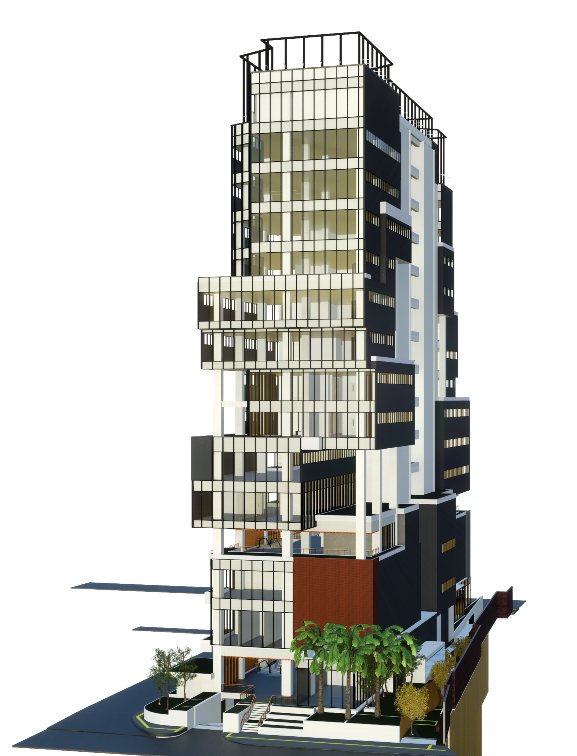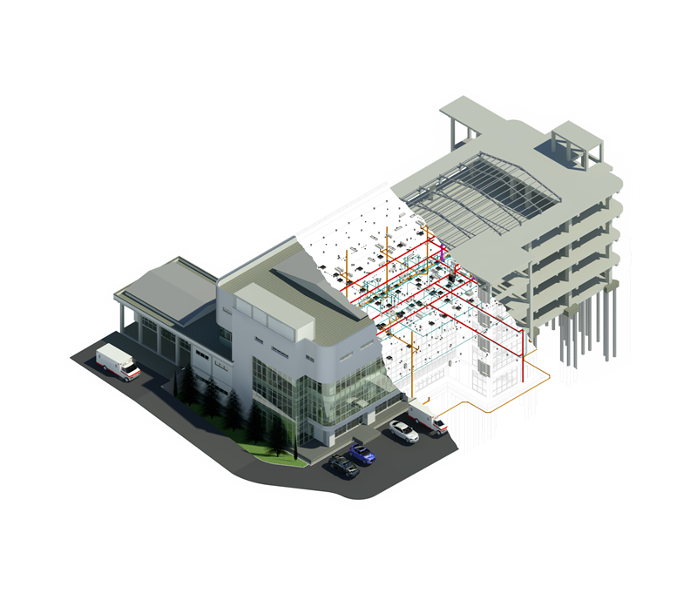Introduction
In the modern era of construction, technology continues to act as a catalyst for change, and one of the leading innovations defining this industry transformation is Building Information Modeling (BIM). In Indonesia, the construction industry is growing rapidly, and to deal with the increasing complexity of projects, contractors need to consider adopting BIM as an integral solution.

A solution for
every need
Infrastructure and building development in Indonesia continues to increase. To support this, technology is needed that can increase efficiency, productivity and quality. Building Information Modeling (BIM) is one technology that can answer these needs.
About BIM
Building Information Modeling (BIM) is a construction project management method that utilizes integrated digital models to combine information from various technical disciplines. BIM not only covers design aspects, but also integrates construction, operational and maintenance data. In the midst of the often complex dynamics of construction projects, the use of BIM can provide a number of strategic advantages for contractors in Indonesia.
In this article, we will explore the various aspects of BIM's advantages and why contractors in Indonesia should consider adopting this technology. From increasing efficiency to optimizing resources, BIM promises significant advances that can have a positive impact at various stages of a construction project. Let's explore together the journey of why BIM is an urgent need in facing the challenges of construction projects in Indonesia.
What is done in BIM?
Building Information Modeling (BIM) is a process used to create a digital model of a building or infrastructure. This BIM model can be used for various purposes, from planning, design, construction, to operation and maintenance.
BIM can carry out various kinds of work in the construction scope, including:
- Planning: BIM can be used to create 3D models of buildings or infrastructure to be built. This model can be used to visualize designs, analyze costs and schedules, and perform simulations.
- Design: BIM can be used to create more accurate and efficient designs. BIM models can be used to integrate various disciplines, such as architecture, civil engineering, mechanical and electrical.
- Construction: BIM can be used to improve communication and coordination between the various parties involved in a construction project. BIM models can be used to create construction schedules, manage materials, and monitor project progress.
- Operations and maintenance: BIM can be used to manage a building or infrastructure after it has been completed. BIM models can be used to create operations and maintenance manuals, track building conditions, and plan repairs or replacements.
What are the benefits of BIM in the world of construction?
In the modern era of construction, Building Information Modeling (BIM) is not just a technological tool, but the key to industrial transformation that brings extraordinary benefits. Not just about designing and building more efficiently, BIM introduces a holistic approach that enables project management with unprecedented levels of accuracy and collaboration. The following are some of the benefits of BIM in the world of construction:
- Increase efficiency and productivity: BIM can help reduce errors, increase productivity and save costs.
- Improving quality: BIM can help ensure that buildings or infrastructure are constructed according to desired standards and specifications.
- Improve safety: BIM can help improve the safety of workers and users of buildings or infrastructure.
- Improving sustainability: BIM can help reduce the environmental impact of development.
BIM is a technology that is still relatively new in Indonesia. However, BIM has the potential to change the way construction works in Indonesia. BIM can help improve efficiency, productivity, quality, safety and sustainability of buildings or infrastructure being built.
We care about results
To achieve maximum results, the implementation of BIM must be carried out comprehensively and involve all parties involved in the construction project.

Conclusion
Building Information Modeling (BIM) has proven itself to be a revolutionary innovation in the construction industry, providing a number of significant advantages. In the context of contractors in Indonesia, adopting BIM has become a necessity to face the increasing complexity and demands of construction projects.
BIM opens the door to more effective collaboration between various project stakeholders, from architects to contractors and property owners. Advantages of design efficiency, in-depth analysis, and automated documentation help speed up project cycles and reduce the risk of errors. Real-time project monitoring through BIM also allows contractors to identify problems early, providing a solid foundation for timely decision making.
Moreover, BIM is not only beneficial during the construction phase, but also brings long-term benefits by incorporating building life cycle management. By optimizing resource use, improving building quality, and providing in-depth analysis, BIM has become not only a tool, but also a strategic partner for Indonesian contractors.
If you are still curious about BIM and want to consult BIM,
Contact us for a personalized meeting